External links
- United States Apnea Association - http://www.usfreediving.org, http://www.usaa.freedivers.com
- US Naval Submarine Base (SUBASE) New London
- US Naval Submarine School
- US Naval Submarine Medical Research Laboratory
Robert Croft is a free-diver who, in 1967, became the first person to free-dive beyond the depth of 200 feet. Croft was a US Navy diving instructor in 1962 at the US Naval Submarine Base New London submarine school in Groton, Connecticut. At the submarine escape training tank, instructors train prospective submariners how to escape from a disabled submarine, which could be resting on the sea bottom.
Working 5 hours per day, 5 days a week at the 118-feet deep 250,000-gallon submarine escape training tank provided him an opportunity to salve his curiosity about holding his breath underwater. From an initial breath-hold time of 1½ to 2 minutes, after a year he was able to hold his breath for over 6 minutes, dropping to the bottom of the tank and sitting there for over three minutes and then returning to the surface at a relaxed pace. With that high level of comfort, he wanted to see how far he could go beyond the 118-feet depth.
In 1967, at the encouragement of his fellow instructors, Croft set out to discover how deep he could dive while holding his breath. Over an 18-month period, in competition with Jacques Mayol and Enzo Majorca, he established three depth records:
He retired from free-diving thereafter.
Croft is credited with inventing "air packing" (also known as "lung packing" or "glossopharyngeal inhalation"), a method used to overfill the lungs, increasing the volume of air in the lungs above the total lung capacity prior to breath-holding. He had developed this method as a youngster living in Narraganset Bay, Rhode Island to swim further and stay underwater longer than any of his peers.
He also served as a research subject for 6 years, from 1962 to 1968, for the Navy research scientists. One of the navy research teams, Dr Karl Schaefer (US Navy) and Dr Robert Allison of the Scott White clinic in Tempel Texas, had done research on diving mammals that demonstrated that air-breathing animals could go to half a mile and deeper without experiencing thoracic squeeze. The discovery of the "blood shift" phenomenon opened a host of theories regarding free diving humans. Croft served as that research subject to determine if that same "blood shift" occurred in humans and measure it. This led to the published study: Schaefer, Karl E., Allison, Robert D., Dougherty, James H., Jr., Carey, Charles R., Walker, Roger, Yost, Frank, & Parker, Donald (1968). Pulmonary and circulatory adjustments determining the limits of depths in breathhold diving. Science, 162(857), 1020-3 .
He also qualified as a navy deep sea diver on air in 1968, and mixed gas in 1972.
In the early 1970s, like many navy divers, he was also certified as a NAUI instructor
In 1980, he retired from the US Navy, after 22 years of service since 1952.

A scuba set is any breathing apparatus that is carried entirely by an underwater diver and provides the diver with breathing gas at the ambient pressure. Scuba is an anacronym for self-contained underwater breathing apparatus. Although strictly speaking the scuba set is only the diving equipment which is required for providing breathing gas to the diver, general usage includes the harness by which it is carried, and those accessories which are integral parts of the harness and breathing apparatus assembly, such as a jacket or wing style buoyancy compensator and instruments mounted in a combined housing with the pressure gauge, and in the looser sense it has been used to refer to any diving equipment used by the scuba diver, though this would more commonly and accurately be termed scuba equipment or scuba gear. Scuba is overwhelmingly the most common underwater breathing system used by recreational divers and is also used in professional diving when it provides advantages, usually of mobility and range, over surface supplied diving systems, and is allowed by the relevant code of practice.
The timeline of underwater diving technology is a chronological list of notable events in the history of the development of underwater diving equipment. With the partial exception of breath-hold diving, the development of underwater diving capacity, scope, and popularity, has been closely linked to available technology, and the physiological constraints of the underwater environment.

A rebreather is a breathing apparatus that absorbs the carbon dioxide of a user's exhaled breath to permit the rebreathing (recycling) of the substantially unused oxygen content, and unused inert content when present, of each breath. Oxygen is added to replenish the amount metabolised by the user. This differs from open-circuit breathing apparatus, where the exhaled gas is discharged directly into the environment. The purpose is to extend the breathing endurance of a limited gas supply, and, for covert military use by frogmen or observation of underwater life, eliminating the bubbles produced by an open circuit system. A rebreather is generally understood to be a portable unit carried by the user. The same technology on a vehicle or non-mobile installation is more likely to be referred to as a life-support system.
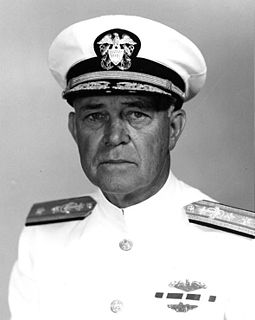
Charles Bowers Momsen, nicknamed "Swede", was born in Flushing, New York. He was an American pioneer in submarine rescue for the United States Navy, and he invented the underwater escape device later called the "Momsen lung", for which he received the Navy Distinguished Service Medal in 1929. In May 1939, Momsen directed the rescue of the crew of Squalus (SS-192).

Scuba diving is a type of underwater diving whereby divers use breathing equipment that is completely independent of a surface air supply. The name "scuba", an acronym for "Self-Contained Underwater Breathing Apparatus", was coined by Christian J. Lambertsen in a patent submitted in 1952. Scuba divers carry their own source of breathing gas, usually compressed air, affording them greater independence and movement than surface-supplied divers, and more time underwater than free divers. Although the use of compressed air is common, a gas blend with a higher oxygen content, known as enriched air or nitrox, has become popular due to the reduced nitrogen intake during long and/or repetitive dives. Also, breathing gas diluted with helium may be used to reduce the likelihood and effects of nitrogen narcosis during deeper dives.

An atmospheric diving suit (ADS) is a small one-person articulated submersible which resembles a suit of armour, with elaborate pressure joints to allow articulation while maintaining an internal pressure of one atmosphere. An ADS can enable diving at depths of up to 2,300 feet (700 m) for many hours by eliminating the majority of significant physiological dangers associated with deep diving. The occupant of an ADS need not decompress, and there is no need for special gas mixtures, so there is little danger of decompression sickness or nitrogen narcosis when the ADS is functioning properly. An ADS can permit less skilled swimmers to complete deep dives, albeit at the expense of dexterity.
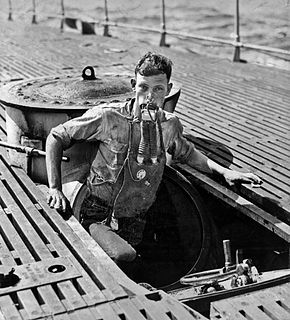
The Momsen lung was a primitive underwater rebreather used before and during World War II by American submariners as emergency escape gear. It was invented by Charles Momsen. Submariners trained with this apparatus in an 80 ft (24 m) deep Escape Training Tank at New London, Mare Island, or Pearl Harbor. It was introduced as standard equipment on Porpoise (P)-class and Salmon-class boats.
Freediving blackout, breath-hold blackout or apnea blackout is a class of hypoxic blackout, a loss of consciousness caused by cerebral hypoxia towards the end of a breath-hold dive, when the swimmer does not necessarily experience an urgent need to breathe and has no other obvious medical condition that might have caused it. It can be provoked by hyperventilating just before a dive, or as a consequence of the pressure reduction on ascent, or a combination of these. Victims are often established practitioners of breath-hold diving, are fit, strong swimmers and have not experienced problems before. Blackout may also be referred to as a syncope or fainting.

An escape set is a breathing set that allows its wearer to survive for a time in an environment without (sufficiently) breathable air.
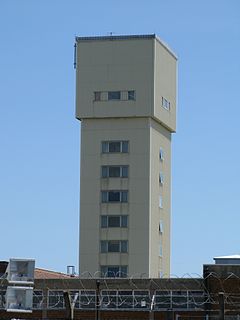
A Submarine Escape Training Tower is a facility used for training submariners in methods of emergency escape from a disabled submarine underwater. It is a deep tank filled with water with at least one underwater entrance at depth simulating an airlock in a submarine. Since the 1930s, towers have been built for use by the Royal Navy, US Navy, Royal Australian Navy and in several other countries.
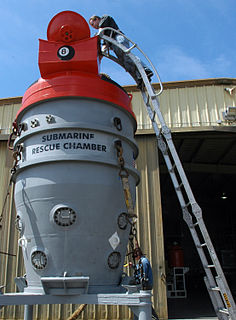
The McCann Submarine Rescue Chamber is a device for rescuing submariners from a submarine that is unable to surface.
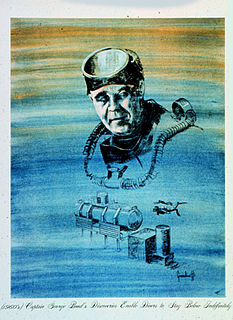
Captain George Foote Bond was a United States Navy physician who was known as a leader in the field of undersea and hyperbaric medicine and the "Father of Saturation Diving".
The Royal Swedish Navy's Submarine Escape and Rescue (SMER) system deals with development and manufacturing of submarines. It consist of 3 major components.

The history of underwater diving starts with freediving as a widespread means of hunting and gathering, both for food and other valuable resources such as pearls and coral, By classical Greek and Roman times commercial applications such as sponge diving and marine salvage were established, Military diving also has a long history, going back at least as far as the Peloponnesian War, with recreational and sporting applications being a recent development. Technological development in ambient pressure diving started with stone weights (skandalopetra) for fast descent. In the 16th and 17th centuries diving bells became functionally useful when a renewable supply of air could be provided to the diver at depth, and progressed to surface supplied diving helmets—in effect miniature diving bells covering the diver's head and supplied with compressed air by manually operated pumps—which were improved by attaching a waterproof suit to the helmet and in the early 19th century became the standard diving dress.
Human physiology of underwater diving is the physiological influences of the underwater environment on the human diver, and adaptations to operating underwater, both during breath-hold dives and while breathing at ambient pressure from a suitable breathing gas supply. It, therefore, includes the range of physiological effects generally limited to human ambient pressure divers either freediving or using underwater breathing apparatus. Several factors influence the diver, including immersion, exposure to the water, the limitations of breath-hold endurance, variations in ambient pressure, the effects of breathing gases at raised ambient pressure, effects caused by the use of breathing apparatus, and sensory impairment. All of these may affect diver performance and safety.
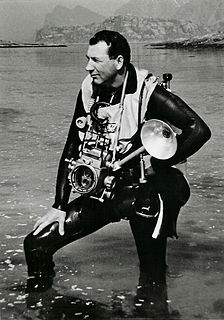
The history of scuba diving is closely linked with the history of scuba equipment. By the turn of the twentieth century, two basic architectures for underwater breathing apparatus had been pioneered; open-circuit surface supplied equipment where the diver's exhaled gas is vented directly into the water, and closed-circuit breathing apparatus where the diver's carbon dioxide is filtered from the exhaled breathing gas, which is then recirculated, and more gas added to replenish the oxygen content. Closed circuit equipment was more easily adapted to scuba in the absence of reliable, portable, and economical high pressure gas storage vessels. By the mid-twentieth century, high pressure cylinders were available and two systems for scuba had emerged: open-circuit scuba where the diver's exhaled breath is vented directly into the water, and closed-circuit scuba where the carbon dioxide is removed from the diver's exhaled breath which has oxygen added and is recirculated. Oxygen rebreathers are severely depth limited due to oxygen toxicity risk, which increases with depth, and the available systems for mixed gas rebreathers were fairly bulky and designed for use with diving helmets. The first commercially practical scuba rebreather was designed and built by the diving engineer Henry Fleuss in 1878, while working for Siebe Gorman in London. His self contained breathing apparatus consisted of a rubber mask connected to a breathing bag, with an estimated 50–60% oxygen supplied from a copper tank and carbon dioxide scrubbed by passing it through a bundle of rope yarn soaked in a solution of caustic potash. During the 1930s and all through World War II, the British, Italians and Germans developed and extensively used oxygen rebreathers to equip the first frogmen. In the U.S. Major Christian J. Lambertsen invented a free-swimming oxygen rebreather. In 1952 he patented a modification of his apparatus, this time named SCUBA, an acronym for "self-contained underwater breathing apparatus," which became the generic English word for autonomous breathing equipment for diving, and later for the activity using the equipment. After World War II, military frogmen continued to use rebreathers since they do not make bubbles which would give away the presence of the divers. The high percentage of oxygen used by these early rebreather systems limited the depth at which they could be used due to the risk of convulsions caused by acute oxygen toxicity.

The following outline is provided as an overview of and topical guide to underwater diving:

The following index is provided as an overview of and topical guide to underwater diving:
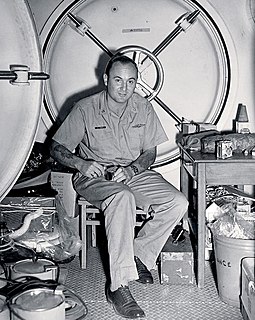
Robert August Barth was a United States Navy Chief Quartermaster, pioneering aquanaut and professional diver. He was the only diver to participate in all U.S. Navy SEALAB missions led by Dr. George F. Bond. Barth is considered to be the father of the Rolex Sea Dweller. In 1967, he developed the idea for the helium release valve which was patented by Rolex on November 6, 1967.